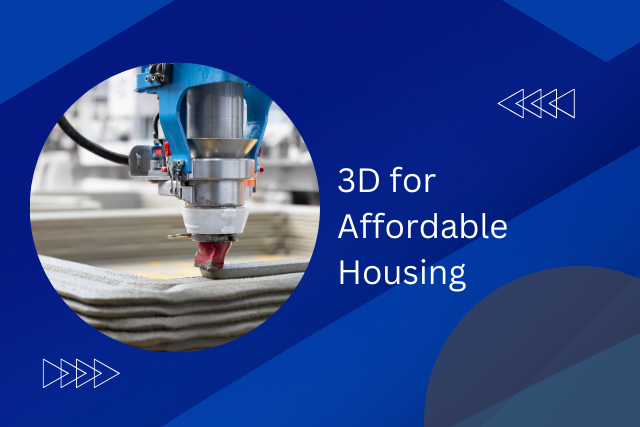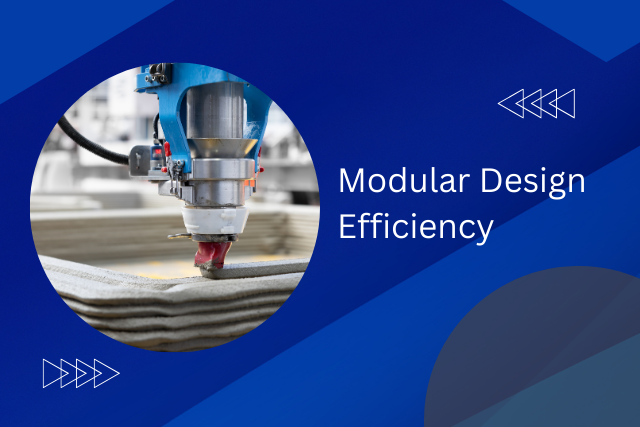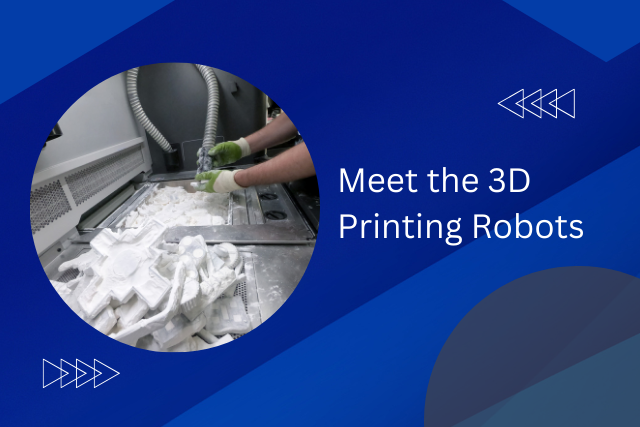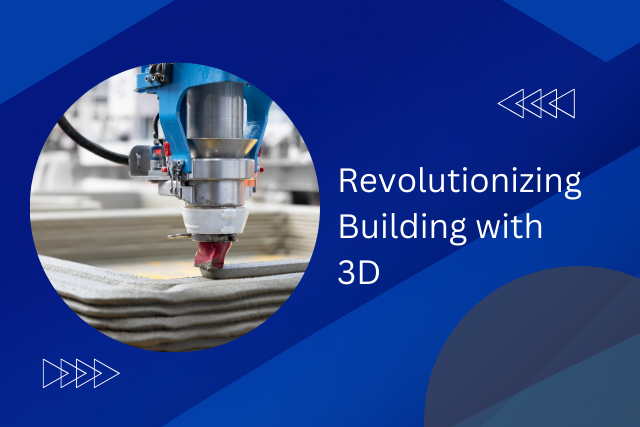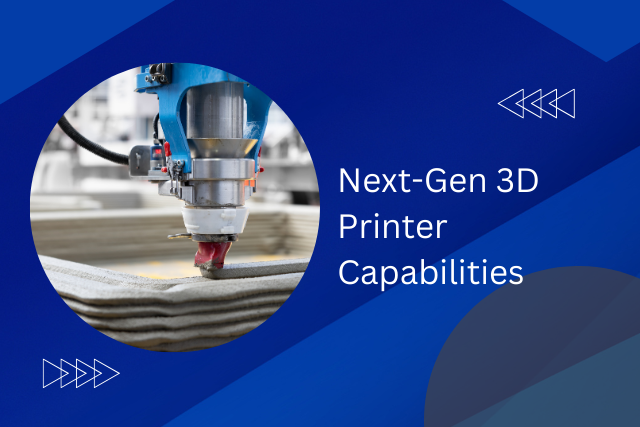In today’s world, where we need to find ways to live sustainably, the idea of 3D printed floating homes and cities is exciting. These homes are made using advanced 3D printing and special materials. They can float on water, making them a good option as sea levels rise. They are designed to withstand tough weather and are kind to the marine environment.
People who design buildings and engineers are planning how these homes of the future will work. It’s important to think about how they will get their energy, how they will get water, and how they fit with other buildings and cities that are already there. These floating homes make us think differently about living near water and how communities can live together in new ways in the 21st century and later.
Revolutionary Materials and Technologies
The development of new, strong materials and advanced printing methods has changed the way we build floating homes and cities. This marks the beginning of a new chapter in building designs that are both sustainable and strong enough to last. These new materials, like carbon fiber-reinforced polymers and graphene-enhanced substrates, are very strong yet light, which is perfect for use in water environments. With the help of 3D printing, architects and engineers can now think beyond old limits, creating structures that can handle the problems caused by rising sea levels and climate change.
Also, the use of smart materials that can automatically adjust to changes in the environment makes these floating places more self-sufficient and efficient. For example, photovoltaic skins allow buildings to generate their own power from the sun, while bio-reactive facades change to let in the best amount of natural light and maintain the right temperature, cutting down the need for artificial heating and cooling. This combination of technology and design not only makes living on water as normal as living on land possible but also shows a way to live well with the changes happening to our planet.
Designing for Adaptability and Resilience
In a time when we can’t always predict the weather, making homes and cities that can float is becoming really important. These designs use new materials and smart ideas to make sure homes can handle different weather and water levels, changing easily with the environment. They are made in parts, so it’s easy to add more space or change the layout as people need. This way, people can personalize their homes, and communities can grow in a natural way, without being stuck to one piece of land.
Using light but strong materials helps these places stay floating and move with the water, offering a unique way of living that goes with the flow of nature. These designs also have special features to soften the blow of waves and storms, keeping everyone safe and comfortable. By focusing on being able to adapt and resilient, these floating homes and cities are a big step towards a future where we live in balance with the water around us, ready to handle the ups and downs of the climate.
Energy and Water Self-Sufficiency
Floating homes and cities are making big steps in becoming self-sufficient in energy and water, by using new technologies to use natural resources. They use solar panels and wind turbines to make electricity. This helps them not rely on the usual power sources and is better for the environment. It shows a way of living that many people want, where they don’t depend on the usual systems.
These places also collect rainwater and use desalination technology to make sure they have enough fresh water. These systems are easy to take care of and work very well, which is important for people who want to live by themselves.
Community and Ecosystem Integration
Making floating homes and cities work well with local areas and nature is about being smart and careful. We want places where people and nature can do well together. This means we need to use new technology and think about keeping nature and communities happy.
| Integration Aspect | Strategy | Expected Outcome |
|---|---|---|
| Ecological Harmony | Building with materials that don’t harm the environment | Less damage to nature |
| Community Connectivity | Making spaces where people can easily meet and talk | Stronger community ties |
| Biodiversity Enhancement | Adding things that help local plants and animals | More types of plants and animals, leading to healthier surroundings |
| Energy and Resource Efficiency | Using renewable energy and recycling water | Communities that can take care of themselves without wasting resources |
| Cultural Sensitivity | Valuing and using local culture in designs | Places that welcome everyone and celebrate different cultures |
Navigating Regulatory and Safety Challenges
Addressing the problems of nature and community when building 3D printed floating homes and cities is very important. But, it’s also crucial to deal with the tricky rules and safety issues that come with these new projects. Since these ideas are new, the usual rules might not fit well, so a careful and smart way is needed to make sure everything is safe and follows the rules.
Working on these projects can do well with a modern, working-together type of rule system that supports trying new things but also keeps everyone safe. It’s key to focus on making safety rules that fit 3D printed water homes. This means making sure the buildings are strong, can’t catch fire easily, and have plans for emergencies, among other things.
Also, dealing with these problems well means that rule makers, designers, and the community need to talk and work together often. This helps make getting approval for these projects less scary and makes sure these new homes and cities are not only cool in design but also serious about safety and following rules. This way, these innovative living places not only look to the future but also make sure the people living there and the environment are safe.
The Aesthetics of Aquatic Architecture
As we transition from the functional to the visual aspects of 3D printed floating homes and cities, the focus shifts towards the integration of aesthetics with aquatic environments. The use of innovative materials not only defines the structural integrity but also enhances the visual harmony with water, promoting a seamless blend between architecture and nature. This segment will explore how design principles and eco-friendly construction practices contribute to creating visually stunning and sustainable aquatic living spaces.
Designing for Water Harmony
In the area of water-based building design, combining looks and usefulness is a key idea when making 3D printed homes and cities that float. This way of thinking makes sure buildings fit well with the water world, making them part of the water instead of just sitting on it. By using smart design methods, builders can now make shapes that look like the moving and changing nature of water life. This helps people and the ocean life live together better. These new ideas help make homes that look good, can handle changes in water conditions, and feel like living in tune with nature.
In simple terms, architects make floating homes and cities that go well with the water. They do this by creating designs that reflect the water’s flow and life. This results in beautiful, strong homes that adjust to water changes, offering a way to live close to nature.
Innovative Material Choices
Exploring new and creative materials is very important for making beautiful and useful floating homes and cities on water. These materials help in creating designs that are strong, can change when needed, and are good for our planet.
| Material | Benefit |
|---|---|
| Biopolymers | Good for the environment, helps reduce harm to our planet |
| Algae-based composites | Floats well, good for the earth |
| Recycled plastics | Doesn’t let water in, helps use things again |
| Transparent aluminum | Strong, lets in sunlight |
Eco-Friendly Structures Impact
Adding eco-friendly structures to water-based buildings makes them both better for the planet and nicer to look at. By using advanced 3D printing methods, we can create homes and cities on the water that fit in with the environment and are strong against weather changes. These buildings are made from materials that can break down naturally or be recycled, showing a new way to think about homes that are good for the planet. The designs, inspired by water plants and animals, help the ocean life thrive and bring more biodiversity.
This new way of building not only changes how we think about living in harmony with nature but also shows that being eco-conscious can go hand in hand with beauty in city design.
Future Horizons: Beyond Floating Homes
In the future, we could see floating cities that can take care of themselves and are good for the environment. These cities will use the latest technology to be fully self-sufficient and fight against climate change. They are made to do well, using renewable energy, growing plants in water (hydroponics), and recycling waste to have a small impact on the environment.
| Feature | Benefit |
|---|---|
| Renewable Energy Systems | Provides clean energy all the time |
| Advanced Water Management | Uses and recycles water very well |
| 3D Printed Structures | Cuts down on waste from building and can be set up quickly |
| Hydroponic Gardens | Grows food in a sustainable way |
| Waste Recycling Systems | Keeps the environment clean and supports sustainability |
These cities are an answer to the problem of rising sea levels and allow us to think differently about how we live with nature. These floating cities could show the world how to use technology and new ideas to solve big problems. The future looks bright for these self-sustaining places, changing how we live, work, and take care of our planet.
Conclusion
In short, 3D printed floating homes and cities are changing the way we think about building houses and communities on water. These homes use new materials, technology, and green methods, making them very flexible, strong, and able to take care of themselves. They also help people live well with nature, bringing a new look to water-based living. Making sure these homes are safe and follow rules is important, but the future looks bright for living on water.

